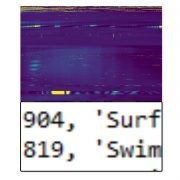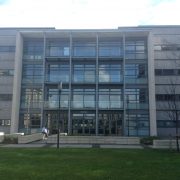Get Excited for the New I-LOFAR Website & boxes
Monday:
I received an email early this morning from Alan the web designer for the new I-LOFAR website, to met with him at 3pm, where we discussed the new I-LOFAR website and where everything is on it and what we are keeping (such as the headings), the website look amazing and so modern. For the POLOFAR data I received off Diana, I edited the script that was given to me, to have labels on the dynamic spectrum.
I then started on one of the I-LOFAR posters which will be on I-LOFAR site for visitors to see “what I-LOFAR is all about”.
In Codify I continued my project on the analysis of shark attacks, were I fixed my NaN problem, and then made a graph of the top 10 shark attacks as a x marker plot.
Tuesday:
At 11am I had a meeting with the rest of the I-LOFAR team with Alan the web designer (as they had yet to speak with him), were we discussed what headers that needed to be changed and what content need to be up as soon as possible. So, I am working with Diana (Postdoc) and Aoife (PhD) to do the majority of this website with me.
Also on the 16th of May we will be going to the French embassy as my supervisor is receiving an award for his outreach science in France.
Wednesday:
I started my day with editing the new I-LOFAR website, I needed to change a few heading and I cannot create them, as I am not the administrator of the website. On the new website I edited the “What of I-LOFAR?” and “The Build”, where I put in a timeline of the I-LOFAR journey. Later in the day I went to a “manual handling course”, for the build of I-LOFAR.
Thursday:
I spent the day editing the technology section of the website, where we have information of the LOFAR technology, the transport team, the International LOFAR Telescope (ILT) , and the International LOFAR station.
Friday:
Spent the day editing and changing the images in the technology section of the I-LOFAR website. I also added in some more team members, and also the list of collaborators, which I received from Prof. Peter Gallagher. I also watched the Science Gallery (Trinity College Dublin) talk on Autonomous Vehicles of Tomorrow Showcase 2017 on YouTube. But everyone look forward to the 10th of April 2017 as the New I-LOFAR website will be released.
MONDAY NEW I-LOFAR WEBSITE, EVERYONE GET EXCITED!!!!!!







